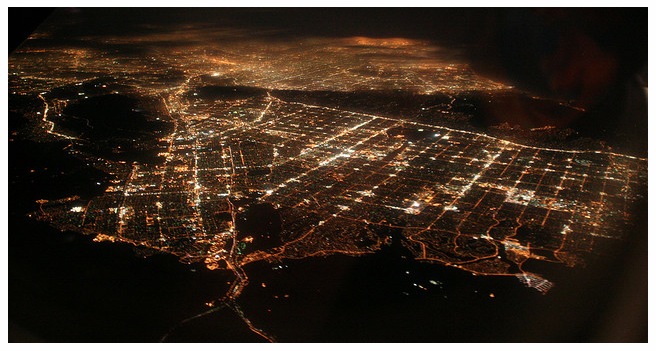Earth became habitable for primitive life forms some 3.X billion years ago. It will cease to be habitable in another 1 billion years or less, given the rate at which the Sun continues to get hotter, which it has been doing for the duration.
Species last, on average, a couple million years. Depending on where you mark our own species start, we are either early or late in that time span.
If you mark our start from the dawn of the Anthropocene — now being vetted as a name for the geological epoch in which human agency is as obvious as that of other natural agents in Earth’s story, such as asteroid collisions, volcanic outpourings and radical weather changes — we’re about ten thousand years into this thing. We’ve done a lot in not very long.
From a pained perspective, the Anthropocene is a time of pestilence by a single species — one with an insatiable hunger for what that species calls “natural resources.” To test that pain, give a listen to “When the music’s over,” on the Strange Days album by The Doors. In it Jim Morrison sings,
What have they done to the Earth?
What have they done to our fair sister?
Ravaged and plundered and
Ripped her and bit her.
Stuck her with knives in the side of the dawn and
Tied her with fences and
Dragged
Her
Down.
From a disinterested perspective, dig Robinson Jeffers‘ The Eye, written during World War II from Tor House, his home in Carmel overlooking the Pacific:
The Atlantic is a stormy moat; and the Mediterranean,
The blue pool in the old garden,
More than five thousand years has drunk sacrifice
Of ships and blood, and shines in the sun; but here the Pacific–
Our ships, planes, wars are perfectly irrelevant.
Neither our present blood-feud with the brave dwarfs
Nor any future world-quarrel of westering
And eastering man, the bloody migrations, greed of power, clash of
faiths–
Is a speck of dust on the great scale-pan.
Here from this mountain shore, headland beyond stormy headland
plunging like dolphins through the blue sea-smoke
Into pale sea–look west at the hill of water: it is half the
planet:
this dome, this half-globe, this bulging
Eyeball of water, arched over to Asia,
Australia and white Antartica: those are the eyelids that never
close;
this is the staring unsleeping
Eye of the earth; and what it watches is not our wars.
There is also this, from Jeffers’ “The Bloody Sire” :
Stark violence is still the sire of all the world’s values.
What but the wolf’s tooth whittled so fine
The fleet limbs of the antelope?
What but fear winged the birds, and hunger
Jewelled with such eyes the great goshawk’s head?
Our teeth, right now, wing limbs and jewell eyes we will never see.
And the life here will end, perhaps in less time than has passed since the planet made half the rocks in the Grand Canyon‘s layer cake.
Now, space.
Astronauts speak of the “Overview_effect” that leaves them changed by seeing Earth from space.
I’ve made do with what I can see from the stratosphere while flying in commercial aircraft. It was from that perspective, for example, that I’ve documented effects of strip mining in the Anthropocene.
Ironies abound. My photo series on coal mining in the Powder River basin has been used both for pro-environmental causes and to promote business in Wyoming.
I’ve got more on this, but neither time nor space for it now.
And more on the Anthropocene:
- Society in the Anthropocene Conference (politicsandmatter.wordpress.com)
- Anthropocene: Humanity’s Most Redefining Era on this Planet (itsabeautifulearth.com)
- Anthropocene Statistics (blogstats.wordpress.com)
- Anthropocene: Eco-Fascist Search For Evidence of Human Destruction to Biodiversity (occupycorporatism.com)
- STS on the Anthropocene (knowledge-ecology.com)
- Anthropocene by David Thomas Smith (trendland.com)
- Robert Walker: Holy Holocene, It’s the Anthropocene (huffingtonpost.com)


Leave a Reply